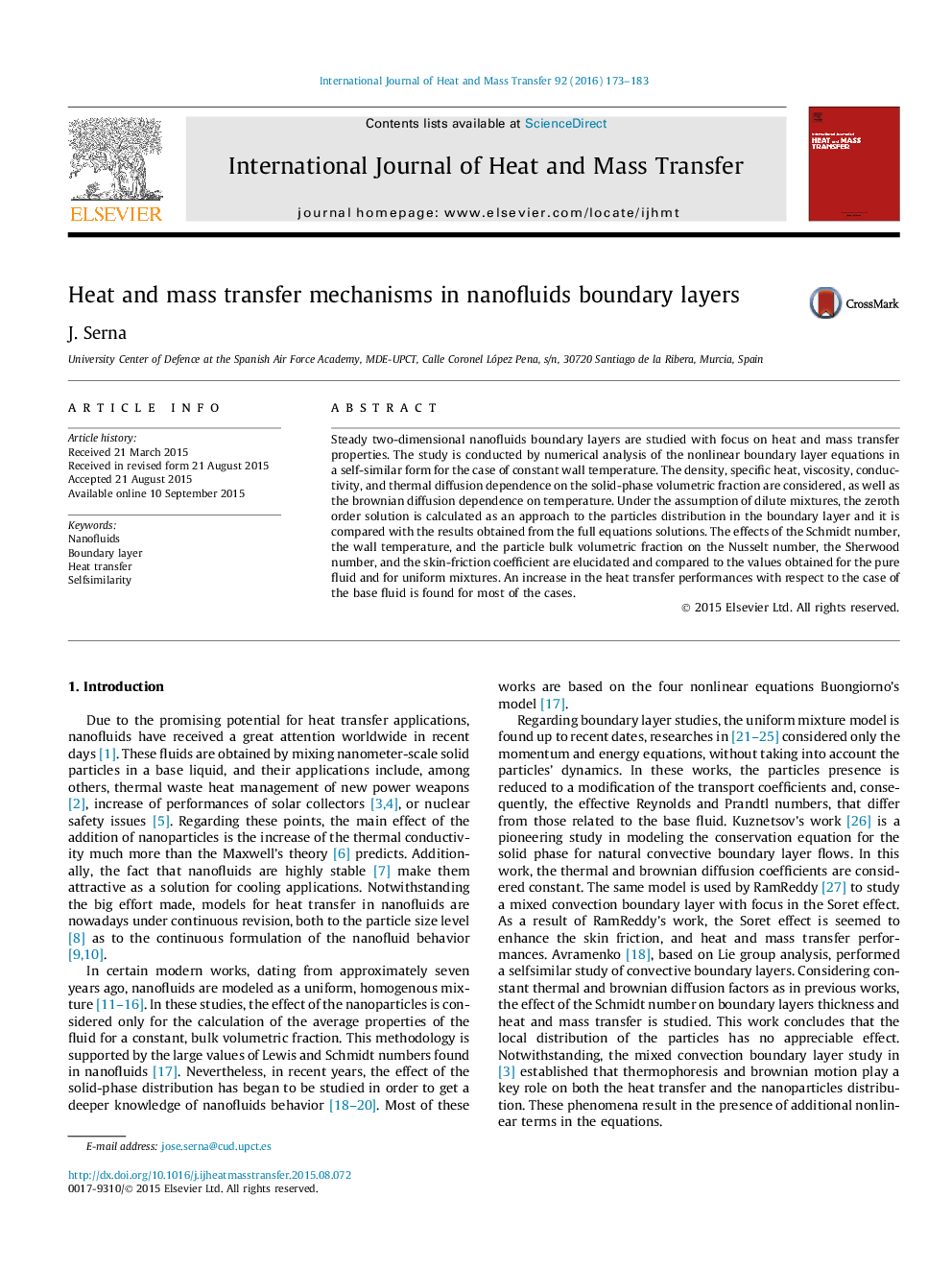| Article ID | Journal | Published Year | Pages | File Type |
|---|---|---|---|---|
| 656528 | International Journal of Heat and Mass Transfer | 2016 | 11 Pages |
•Selfsimilar equations for nanofluids boundary layers are derived.•Nonlinear results for Nu, cf, and Sh are compared with first order linear expansion results.•The impact of the solid phase modeling in transport coefficient is evaluated.•Sc, wall temperature, and solid phase bulk concentration effects on Nu, cf, and Sh are quantified.•The dust free layer can worsen the heat transfer predictions obtained with homogeneous models.
Steady two-dimensional nanofluids boundary layers are studied with focus on heat and mass transfer properties. The study is conducted by numerical analysis of the nonlinear boundary layer equations in a self-similar form for the case of constant wall temperature. The density, specific heat, viscosity, conductivity, and thermal diffusion dependence on the solid-phase volumetric fraction are considered, as well as the brownian diffusion dependence on temperature. Under the assumption of dilute mixtures, the zeroth order solution is calculated as an approach to the particles distribution in the boundary layer and it is compared with the results obtained from the full equations solutions. The effects of the Schmidt number, the wall temperature, and the particle bulk volumetric fraction on the Nusselt number, the Sherwood number, and the skin-friction coefficient are elucidated and compared to the values obtained for the pure fluid and for uniform mixtures. An increase in the heat transfer performances with respect to the case of the base fluid is found for most of the cases.
